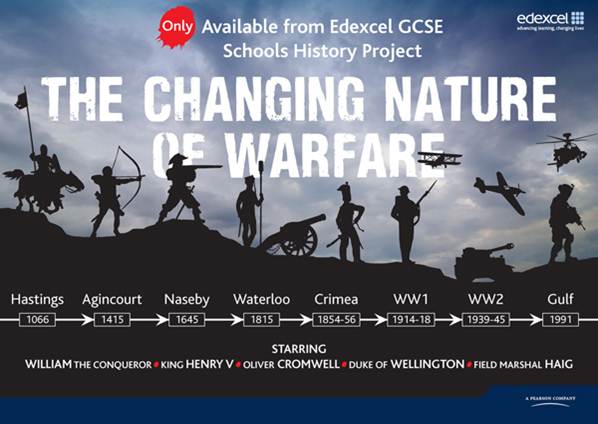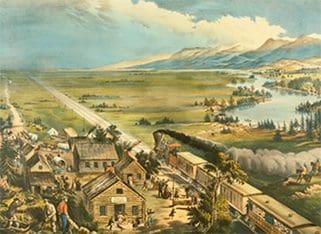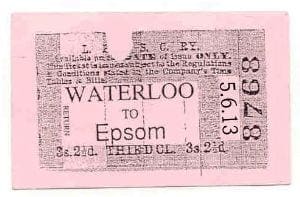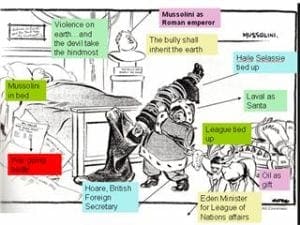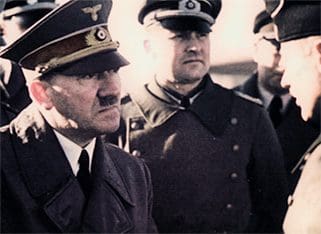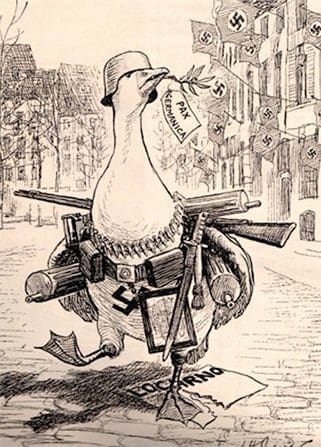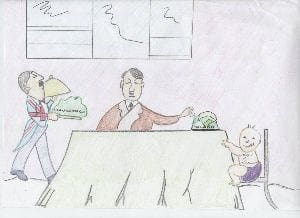
This part of the site offers an initial short list of the best twenty products I have seen in the last couple of years. Wherever possible the brief description cross-references you to an Outstanding Lesson in which the imaginative outcome features. It is strongly recommended that you try to broaden the range of products students are asked to complete, without gimmickry replacing rigour.
Analogy diagrams
Instead of verbally describing an analogy, why not use a diagram. Better still, why not ask the students to devise one of their own. Show the students a few examples to give them confidence and practise deconstructing them. Students might be shown the analogy of a bonfire with spent matches, logs, wind, oil soaked rags etc. as an explanation for World War One. The students can then come up with their own for the causes of World War Two. As you can see from the example images below, students can be very imaginative, given the stimulus and the challenge.
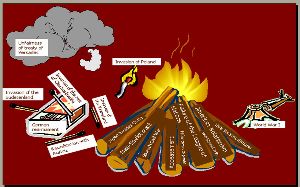

Annotated answers
Instead of asking students to always write full answers, it can often be effective if they merely annotate examples of scripts

